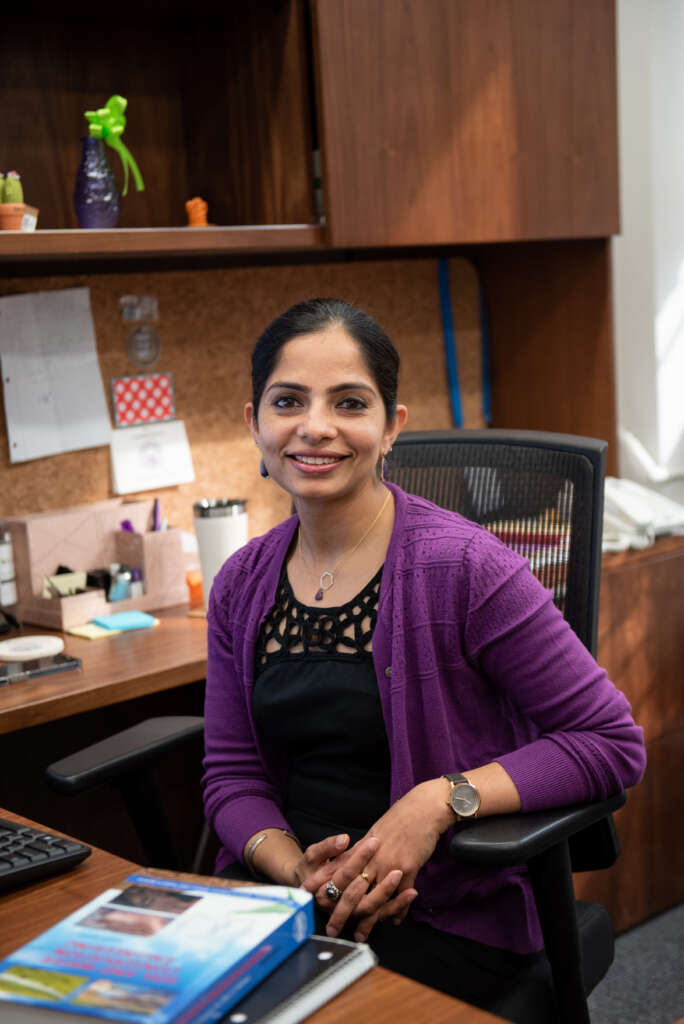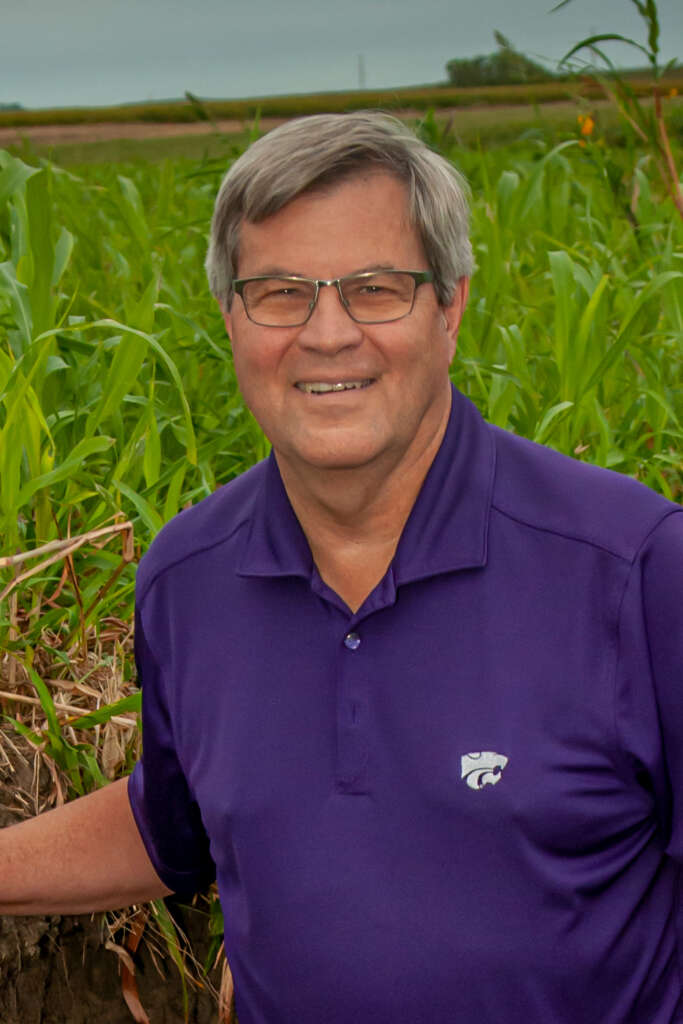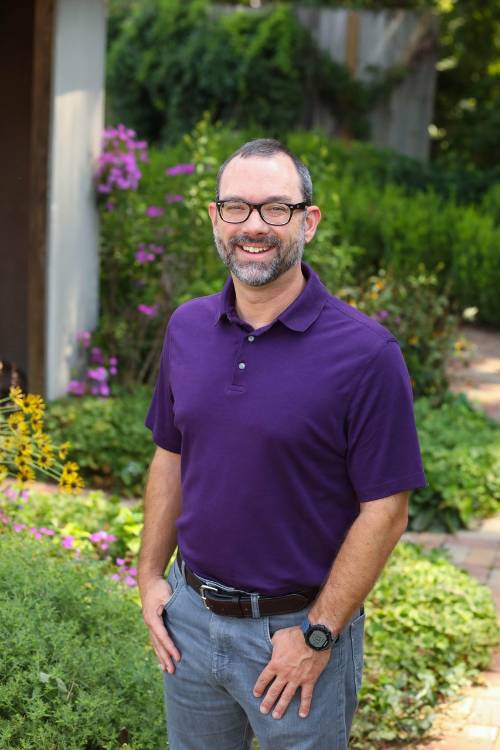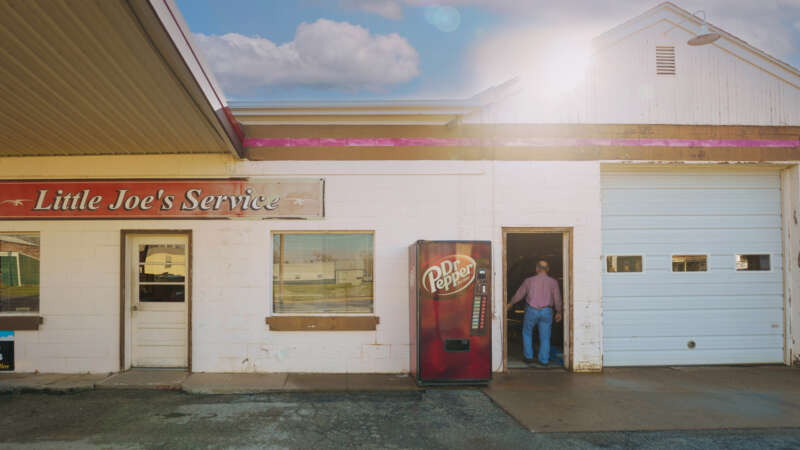By next year, half of the world’s population could be living in areas facing water scarcity, including Kansas. Experts at Kansas State University are finding solutions to this challenge.
Water is life — and it’s disappearing at alarming rates.
People’s thirst for water has grown more than two times faster than the population. But the increase in water usage isn’t just due to more people on the planet. We’re using more than ever before. Increasing global temperatures and changes in climate patterns also contribute to the decline in water availability.
The challenge we now face is how to effectively conserve, manage and distribute the water we have.
In as little as 50 years, many regions of the United States could see their freshwater supply reduced by as much as a third, scientists warn. Of all the freshwater basins that channel rain and snow into the rivers — from which we draw the water we rely on for everything from drinking and washing to producing our food — nearly half may be unable to meet consumers’ monthly demands by 2071. This will mean serious water shortages for Americans.
Running dry
In Kansas, the outlook isn’t any better. As America’s breadbasket, that’s bad news for the state’s economy and the world’s food pantry.
The High Plains aquifer, which includes the Ogallala aquifer, is the most important water source for much of western and central Kansas, supplying 90% of the water used by Kansans each day. The majority of water from the High Plains aquifer supports irrigated agriculture (80-85%), but it is also the primary water source for the region’s cities, industries and homes.
More than one-fourth of the aquifer is at “minimum threshold” according to Brownie Wilson, water data manager with the Kansas Geological Survey. That means it’s not possible to extract 200 gallons per minute, a minimum rate for large-scale irrigation. Within 50 years, almost half of the aquifer in southwest Kansas is expected to decline to minimum threshold, based on predictions from past groundwater declines.
Clogging the works
Eastern Kansas also faces water woes. Municipalities and industry are the main consumers, with their source being surface water — rivers, lakes and reservoirs. While the usually wet eastern Kansas has had to deal with drought in recent years, its main problem is sedimentation.
How does that work? Tuttle Creek reservoir, which provides water for a large area around Manhattan and protects areas south from floods, has lost 47% of its capacity because it is filling up with sediment. If something isn’t done to fix the problem, by 2070, it will only have 10% of its capacity remaining.
Financial forecast
The two biggest drivers of the Kansas economy are agriculture and manufacturing — and both depend on water. Dried-up aquifers and silt-filled reservoirs will afflict all Kansans.
“Let’s plan to maintain the economy out in western Kansas. Let’s try to do whatever we need to do today to make sure that 100 years from now, we have a sustainable irrigated ag industry out there, because it’s important,” said Bill Golden, research assistant professor of agricultural economics. “But we have got to learn to use less water. Eastern Kansas is in good shape now, but maybe we don’t wait until we’re faced with a serious problem, like the depletion of the Ogallala, to get serious.”
Searching for solutions
While water scarcity is a global and local crisis, our brightest minds are working to find solutions. Attacking the issue from all sides, more than 100 K-State scientists are working together, sharing research and collaborating on projects.
Their work is being organized by the Kansas Water Institute, K-State’s new interdisciplinary program to elevate critical research. Turn the page to meet just a few K-Staters leading the charge.
Our thirsty world
- 0.007% of Earth’s water is available to its 8.1 billion people
- 1.1 billion people worldwide lack access to water
- 4 billion people experience severe water scarcity for at least one month each year
- 3.3 billion people currently live in arid areas and regions with high water stress
Our thirsty state
- 90% of water used in Kansas is groundwater in the High Plains aquifer region
- 80-85% of that usage is for irrigating cropland
- Eastern Kansas relies on surface water, mostly for municipalities and industry
- 47% of Tuttle Creek reservoir’s storage capacity is gone due to sediment
- Hays is the most water-efficient town in Kansas, out of necessity
Meet the dream team
K-State researchers are tackling the problem from all angles — technology, farming practices, outreach and conservation methods. Here are just a few examples of this vital work.
Vaishali Sharda

When making important decisions, wouldn’t it be nice to have a glimpse of what the future holds?
Vaishali Sharda, assistant professor of biological and agricultural engineering, is creating a tool that helps farmers forecast the future.
By taking information from on-the-ground sensors, satellites and remote sensors, her system helps crop producers conserve water, as well as manage nutrients and soils. The tool shows farmers multiple outcomes for crop production under future climate scenarios, giving them the insight needed to adjust to climate-smart practices that better manage their resources and boost their productivity.
“Ensuring the sustainability of water resources, especially under a changing climate and increasingly extreme weather conditions, necessitates a shift in farming practices,” Sharda said. “There is a need to integrate scientific and engineering expertise, assess a range of scenarios and develop resilience metrics to prolong the viability of nonrenewable water resources.”
Increasing water efficiency
Chuck Rice

Drought or deluge. Dryland farmers across Kansas face these extremes, often in a single growing season.
As part of a team of scientists across the country, Chuck Rice, university distinguished professor of soil microbiology and holder of the Mary L. Vanier University Professorship, works to improve water use efficiency and soil health for these farmers.
One goal is to increase water and nitrogen use efficiencies by 50% and maintain or improve soil health.
“What we’re trying to do is intensify and diversify those systems,” Rice said. “In the years with more water, can we double-crop instead of having land bare over the summer? Another way to intensify and diversify is to add cover crops that could also be grazed to feed livestock.”
To achieve this, his team is applying different strategies to 17 different rotation systems in Kansas and Oklahoma. The researchers adjust the nitrogen/fertilizer rate: If it looks like it’s going to be a dry spring, less nitrogen is added; for a wet year, more nitrogen is added.
“If you have improved soil health, then water from intense rainstorms is infiltrating into the soil rather than running off the field and causing erosion,” Rice said. “That allows for the crops to use that water, increasing precipitation use efficiency.”
The researchers also are looking at weather forecasting to project the probability of a wet or dry season. That would help farmers decide which crops to plant to lower their risk and stabilize their income.
“There are areas around the world that are similar to this region, so hopefully, we will not only have an impact in the central part of the U.S. but also a greater global impact,” Rice said.
People power
Matthew Sanderson

New high-tech tools and soil-health measures created by researchers are only good if they’re put into practice by farmers and ranchers. That’s where Matt Sanderson comes in.
Sanderson, a sociologist and the Randall C. Hill professor of sociology, anthropology, and social work, gets to know the people of western Kansas, finding out what they think and why they do what they do.
“Does the technology researchers are developing meet a need? Does the farmer or rancher think there’s a need?,” Sanderson asked. “I can provide some context to put the technical solutions into a broader picture of how these communities work, what they value and what they don’t.”
Sanderson has found that ag producers utilizing the High Plains aquifer do think there’s a need for conservation. His 2018 survey found that 90% of farmers said water needs to be conserved, acknowledging there’s a problem. But he also found that only 7% were doing something about it personally.
Why the dichotomy between thoughts and behavior? Sanderson said it has a lot to do with how ag policies don’t reward water conservation but actually encourage water use. And many farmers believe they’re already being as efficient as possible.
Sanderson collaborates with engineers, agronomists, hydrologists and policy analysts to ensure the human-factor is considered in their work. Because when it comes down to it, nothing improves without people buying in and working together toward a solution.
Designing conservation
Lee Skabelund

From taking shorter showers, to creating landscapes that soak in snow and rain, to landscaping with native or well-adapted non-invasive plants that require little extra water — these are things everyone can do to conserve water.
Lee Skabelund, associate professor in landscape architecture/regional and community planning, works with students and communities to create gardens and landscapes that need very little supplemental irrigation.
“Landscape ecology is about making connections to how things work together,” Skabelund said. “When planting a garden or landscape, use native plants or non-invasive plants that are well adapted to our region. These will need less water and won’t need fertilizer or other supplements. This helps the whole ecosystem, including bees and insects, which are vital for a healthy ecosystem.”
Much of Skabelund’s career has been working with designers, community officials, planners and engineers to envision and design environmental systems that help with stormwater management, water conservation and restoring the local ecology. Implementing his designs not only saves water; they create beautiful, life-filled scenery.





